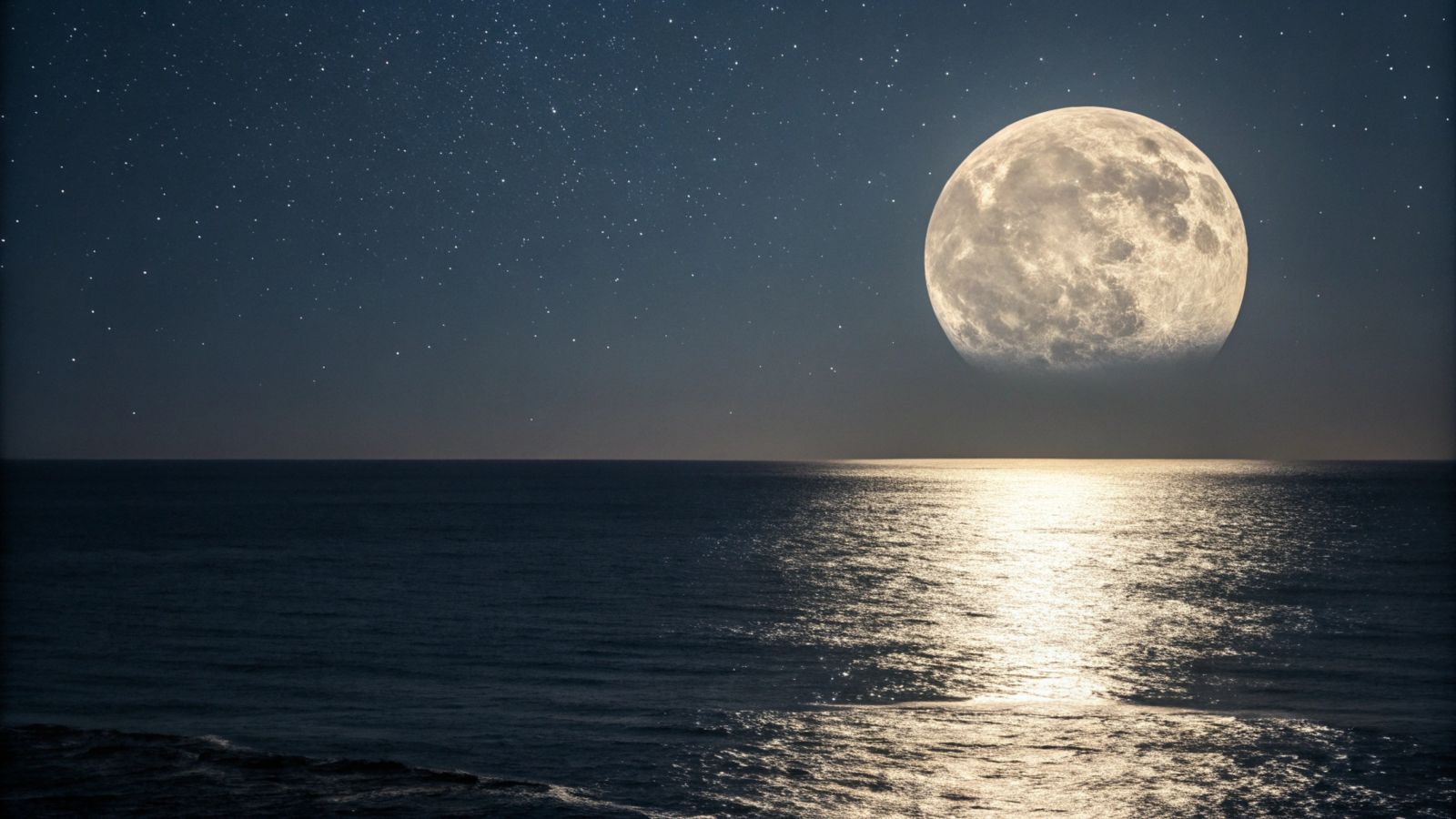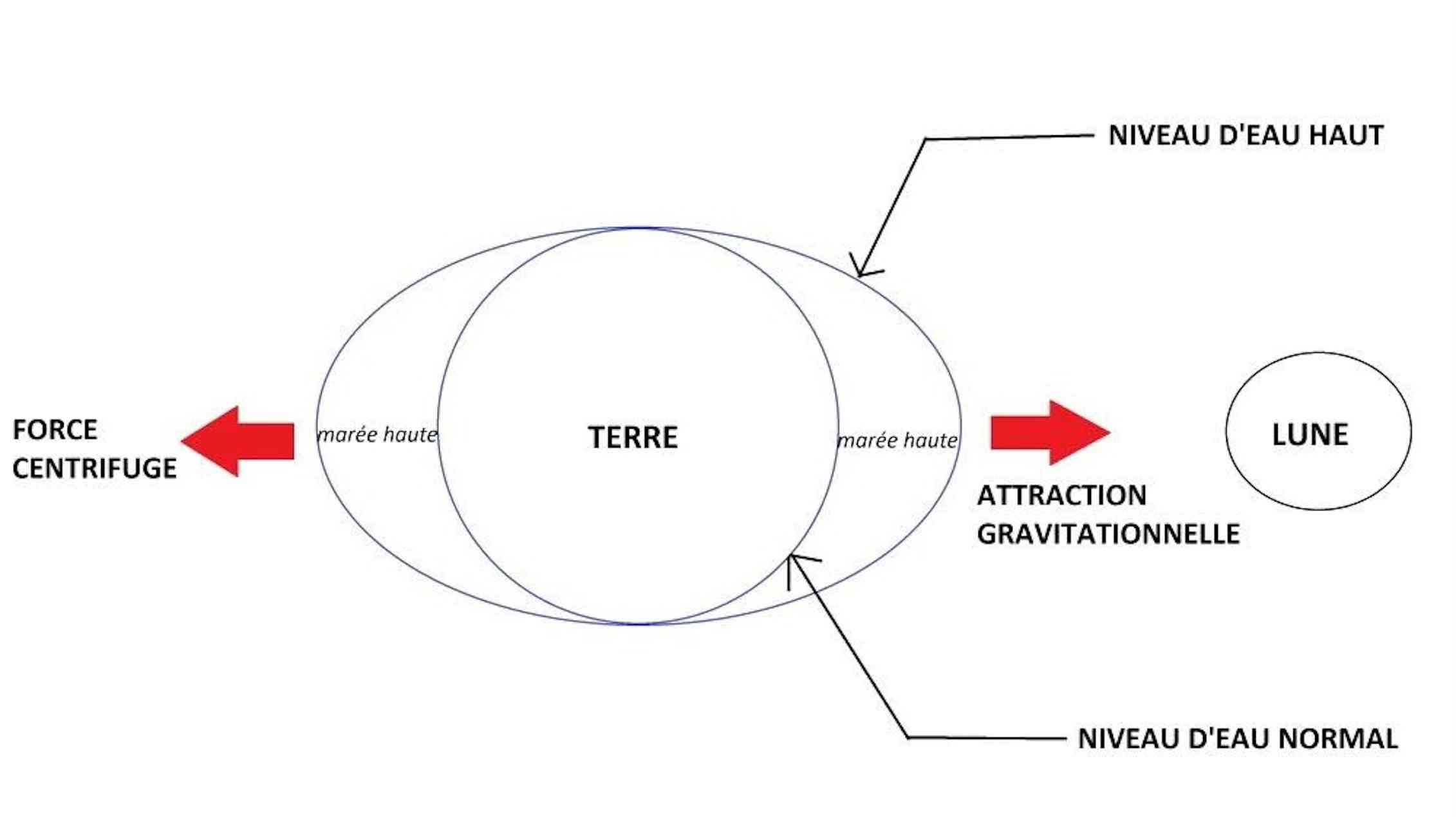How does the Moon, so far from Earth, affect the tides? 🌊
Published by Adrien,
Source: The Conversation under Creative Commons license
Other Languages: FR, DE, ES, PT
Source: The Conversation under Creative Commons license
Other Languages: FR, DE, ES, PT
Follow us on Google News (click on ☆)
The Moon is about 239,000 miles (385,000 km) from Earth, how can it move such enormous amounts of water?
To understand how the Moon affects the tides, you need to know that the Moon's gravity pulls the oceans towards it. Even though the Moon is very far away, it is massive enough for its gravitational force to be strong enough to do this.

But before addressing the question of the Moon's influence on the tides, let's see what tides are.
Tides correspond to the rise and fall of the water level in the oceans (and lakes, and even in your glass of water, but these movements are very weak).
When the sea level reaches its highest point, it is called high tide. When it falls to its lowest point, it is called low tide.
The rise and fall of the tides are known as the tidal cycle. If there is one high tide and one low tide per day, it is called a diurnal tidal cycle. If there are two high tides and two low tides, it is called a semi-diurnal tidal cycle.
The Moon has the greatest effect on the tides, but it is not the only factor that affects them. The Sun and the Earth can also influence the tides.
The Moon's influence on the tides
The Moon influences the tides due to gravity. You will have noticed that every time you jump, you always land back on the ground. This is because the Earth's gravity pulls you down.

Principle of how tides work.
Wikimedia, CC BY
The Moon has its own gravity, which pulls the oceans towards it. The Moon's gravitational pull on us is much weaker than the Earth's, so we don't really notice it, but we can see the Moon's effect on the liquid water of the oceans. The oceans are slightly pulled by the Moon's gravity, causing a bulge or high tide on the side of the Earth closest to the Moon.
If the Moon causes a high tide on one side of the Earth, what causes the high tide on the other side? Well, it's also the Moon because it causes a rotation of our planet and thus a centrifugal force. This force has exactly the same average value as that due to gravitational attraction, which explains why the tides are symmetrical with respect to the center of the Earth.
These two high tides pull water away from the rest of the oceans, causing two low tides between the high tides.
The Sun also plays a role
The Sun, like the Moon and the Earth, also has its own gravity that can affect the tides. Although the Sun is much larger than the Moon and has more gravity, it is also much farther away, which means its influence on the tides is half as strong as the Moon's.
If its effect is less significant, it is not zero. When the Sun and the Moon are aligned with the Earth (during a full moon or a new moon), their combined gravity causes very high (and very low) tides, called "spring tides".
When the Sun and the Moon are at right angles to each other (during a waxing or waning moon), the Sun helps to cancel out the Moon's gravitational pull, causing weaker high tides and higher low tides than average, called "neap tides".
The Moon therefore influences the tides due to gravity, but the Sun's gravity and the Earth's rotation also modify the behavior of the tides.